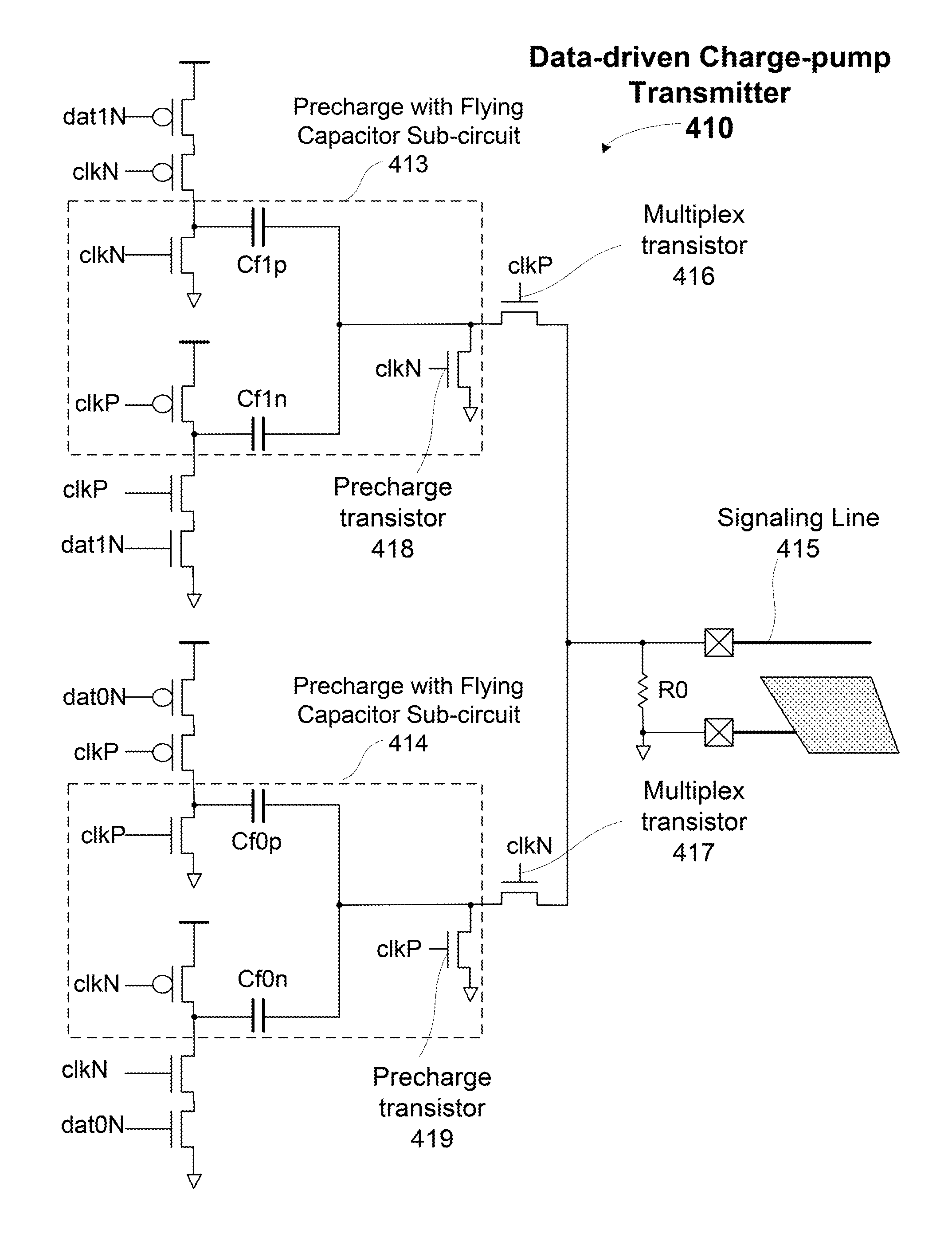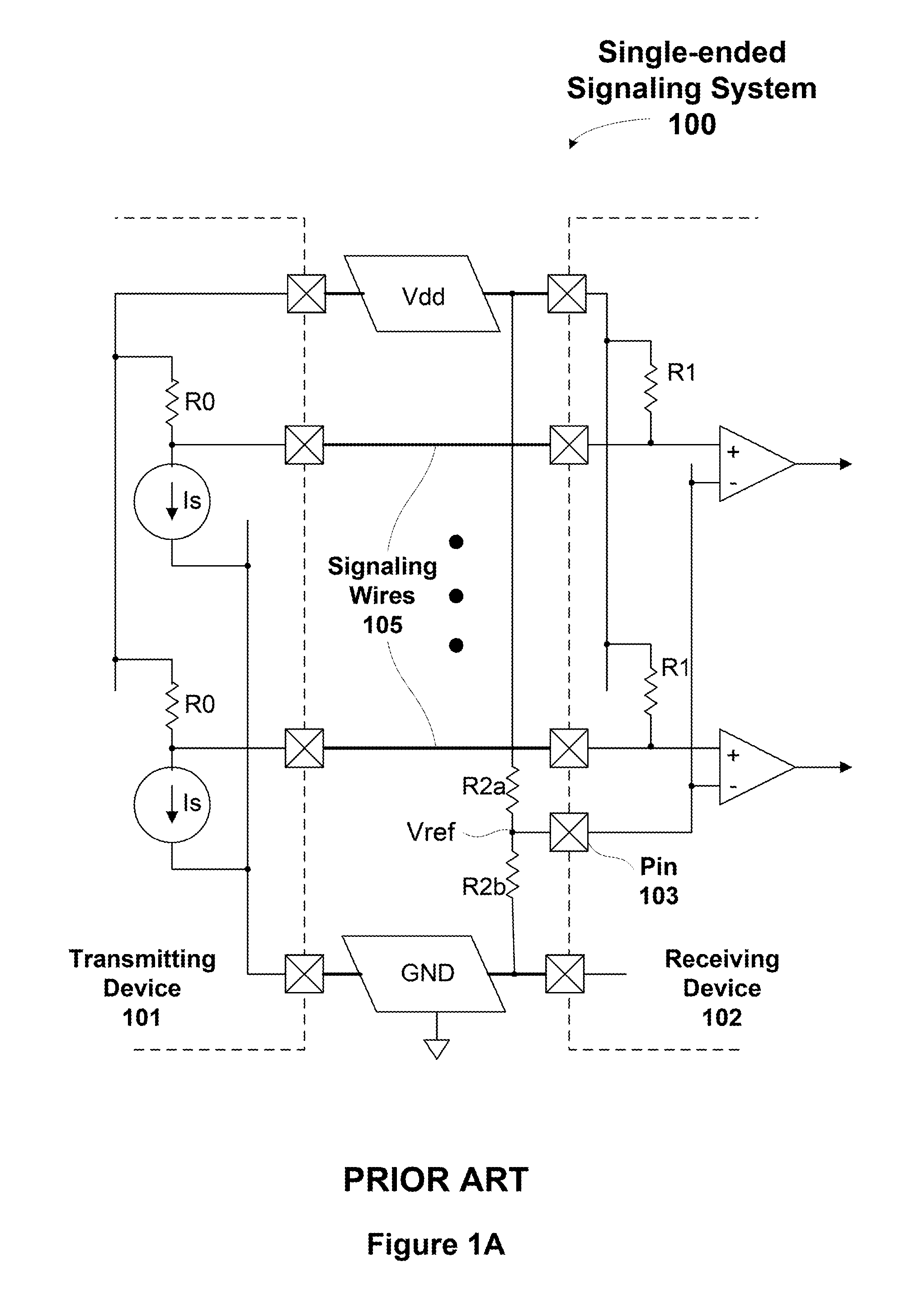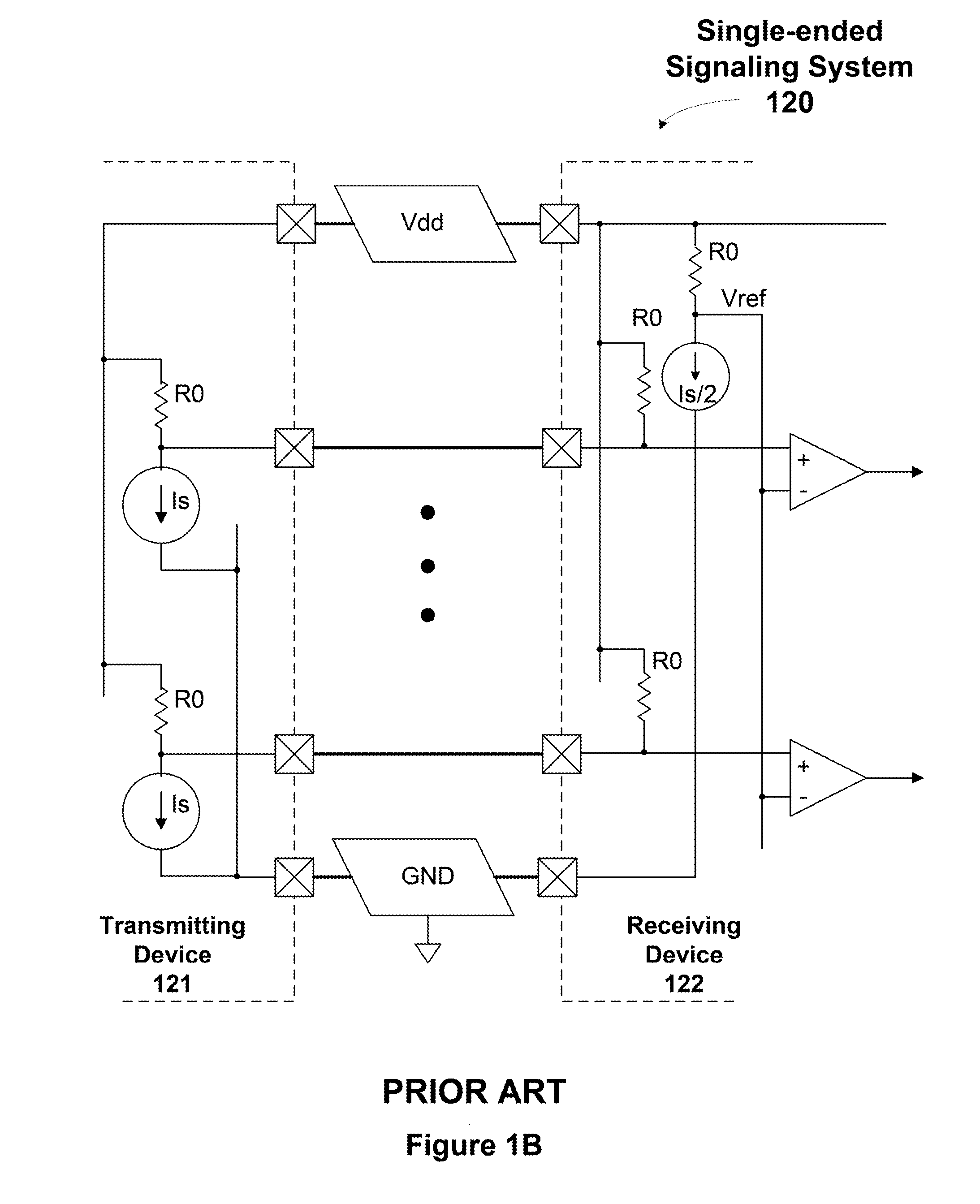Ground referenced single-ended signaling
a single-ended signaling and ground reference technology, applied in the field of transmitting signals, can solve the problems of difficult to ensure agreement, single-ended systems are more susceptible to externally coupled noise sources, and require more circuitry per channel, so as to reduce the impedance of the signal current return path and reduce nois
- Summary
- Abstract
- Description
- Claims
- Application Information
AI Technical Summary
Benefits of technology
Problems solved by technology
Method used
Image
Examples
Embodiment Construction
[0064]In the following description, numerous specific details are set forth to provide a more thorough understanding of the present invention. However, it will be apparent to one of skill in the art that the present invention may be practiced without one or more of these specific details. In other instances, well-known features have not been described in order to avoid obscuring the present invention.
[0065]A single-ended signaling system may be constructed that uses one of the power supply networks as both the common signal return conductor and the common reference voltage. While either power supply, or even a network at a voltage level that is not used as a power supply, can be made to function as the common signal return conductor and the common reference voltage, the ground terminal is preferred, as explained further herein. Therefore, although ground-referenced signaling is described in the following paragraphs and illustrated in the Figures, the same techniques also apply to a ...
PUM
 Login to View More
Login to View More Abstract
Description
Claims
Application Information
 Login to View More
Login to View More - R&D
- Intellectual Property
- Life Sciences
- Materials
- Tech Scout
- Unparalleled Data Quality
- Higher Quality Content
- 60% Fewer Hallucinations
Browse by: Latest US Patents, China's latest patents, Technical Efficacy Thesaurus, Application Domain, Technology Topic, Popular Technical Reports.
© 2025 PatSnap. All rights reserved.Legal|Privacy policy|Modern Slavery Act Transparency Statement|Sitemap|About US| Contact US: help@patsnap.com



